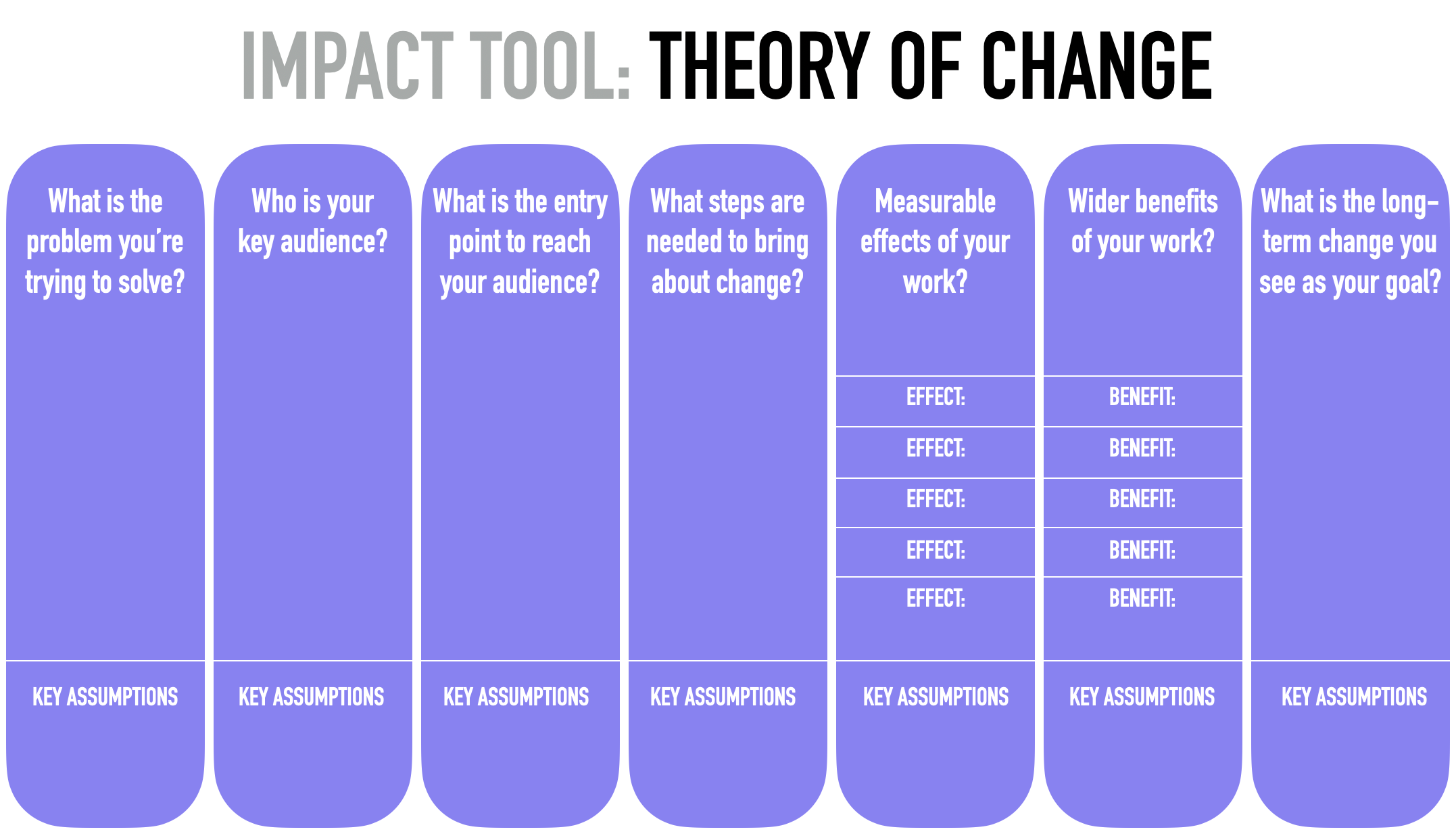…
Social Impact Analysis
…

Social Impacts and issues are the most difficult to deal with because we have the least-developed tools to define, assess, and measure social impacts. Even ecological impacts are easier to measure, using tools like a Life Cycle Analysis (though these aren’t exactly easy or complete, either).
There is a long history of social impact tools to measure impact. A Social Impact Assessment (SIA), which used to be called “Social Return on Investment” (SROI), attempts to measure social impacts like LCAs measure ecological impacts, usually in financial terms.
Currently, the tool most used and recommended is the Theory of Change tool. It stresses impact less than intent, asking people to analyze the process of impact, the assumptions underlying that process, and the people involved, before it asks for metrics.
These are all, still, new approaches and none of this is easy to do, There are no standards or agreement about how best to do measure social impact. however, it’s still imperative. All of these tools suffer the challenge of determining which social issues to measure, since any list will likely be different for each individual or group. While there is controversy over how to define and accurately measure social impacts, at the very least, it iInitiates a conversation about valuing social impacts. When social impacts are measured in financial terms (which isn’t the only way to assess social impacts), it can be much more persuasive to businesspeople and government officials to take social impacts more seriously.
Socially Responsible Investment Funds (SRIs) develop proprietary metrics to calculate the social performance of the companies they invest in as well as to “screen” investments that don’t match their values. All of them publish the list of companies they invest in and some publish their metrics, but there is little agreement in approach or values.
Generating a Theory of Change is not a trivial undertaking, because it usually requires the translation of social values into some type of monetary value. Considerable controversy surrounds the notion that values such as tolerance and anti-discrimination can be translated into monetary terms easily or at all. Some argue that it would be wrong to even attempt to monetize core human values, as they fear that inappropriate trade-offs will result. For example, is a little slavery or a little less privacy alright if the bottom line improves? Or, what’s the value of a beautiful view from the top of a mountain? Does tourist revenue truly account for it all?
There are no common approaches to calculating social impact and few tools readily available. To start with, it’s important to establish and describe the impact value across the social issue spectrum. These track the inputs (desired or measured benefits) of a solution, the activities that create impact, the outputs (impact value being generated in social terms), and the overall outcome of the organization’s impact. To be sure, it’s not possible to calculate all social impacts, and it can be controversial how an organization makes its assumptions and calculations. More so, it may not be appropriate to even try to quantify social impact for some cases (such as trying to justify freedom over slavery—there shouldn’t need to be a quantification).
There are other approaches to measuring social and cultural impacts, as well. For example the Wisdom Cards designed by Lilia Rustom, Kristian Simsarian, and Meta Integral. These cards are a design tool for assessing impact during the design process (when the most impact can be created).
There are, undoubtedly other approaches. In fact, there needs to be other approaches, both more inclusive ones, easier-to-use ones, and those tailored to specific communities, industries, and applications. This is another great project for designers (and others) to dive into.
Download the Tool:
Wisdom Economy Cards
Read about Social Impacts and Tools:
Design is the Solution, 2nd Edition